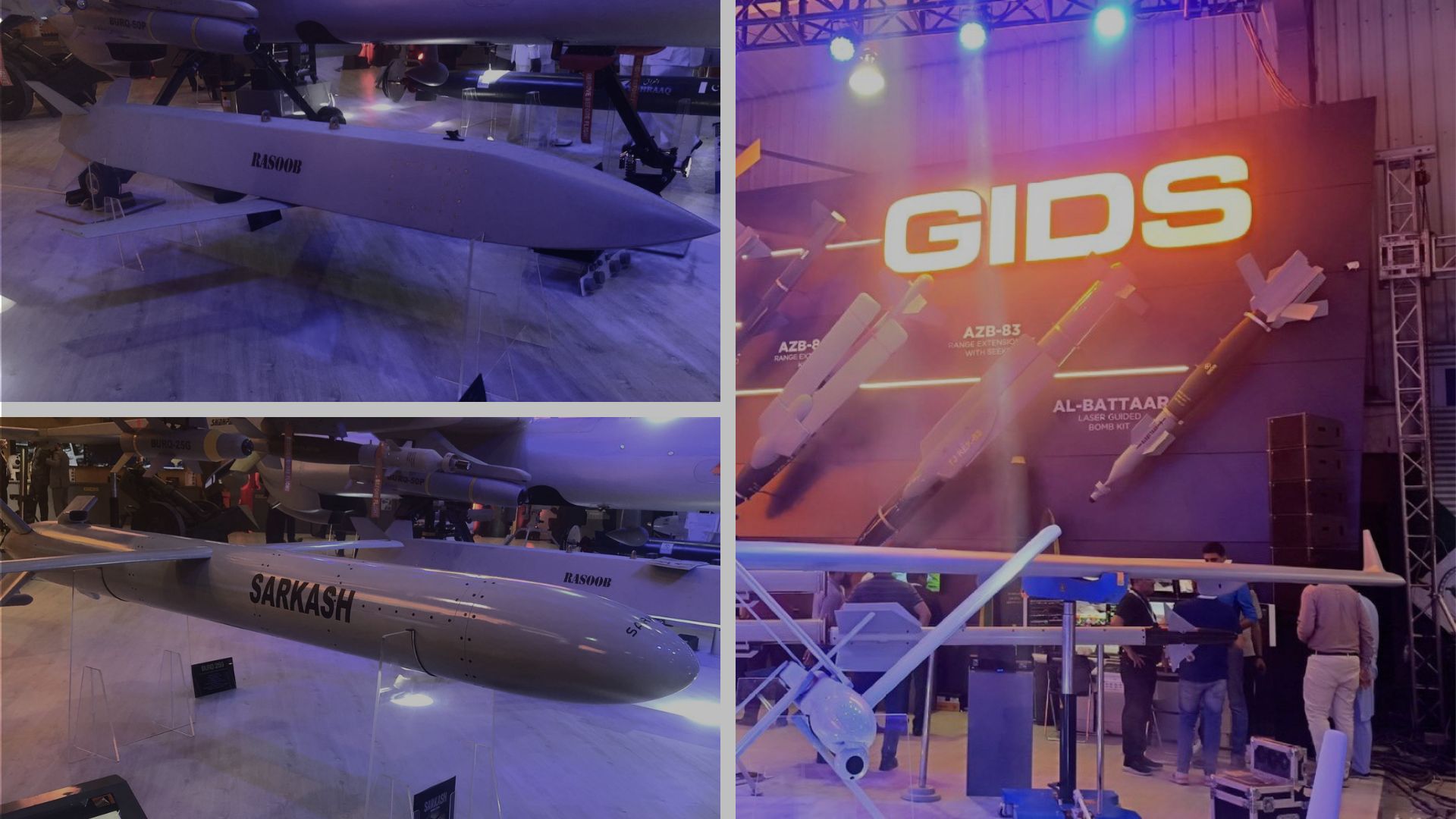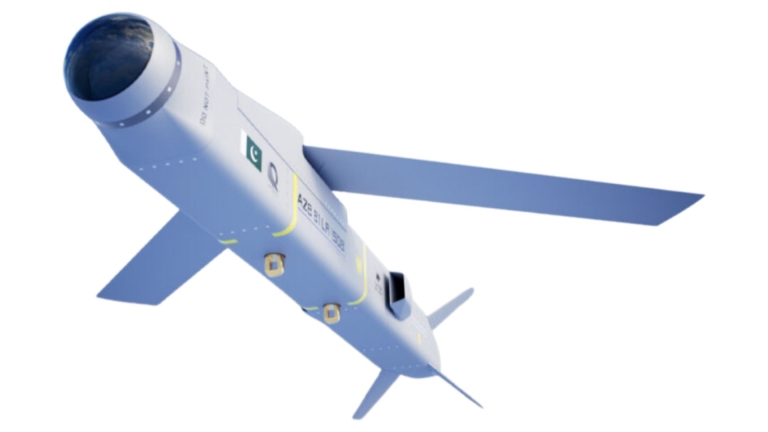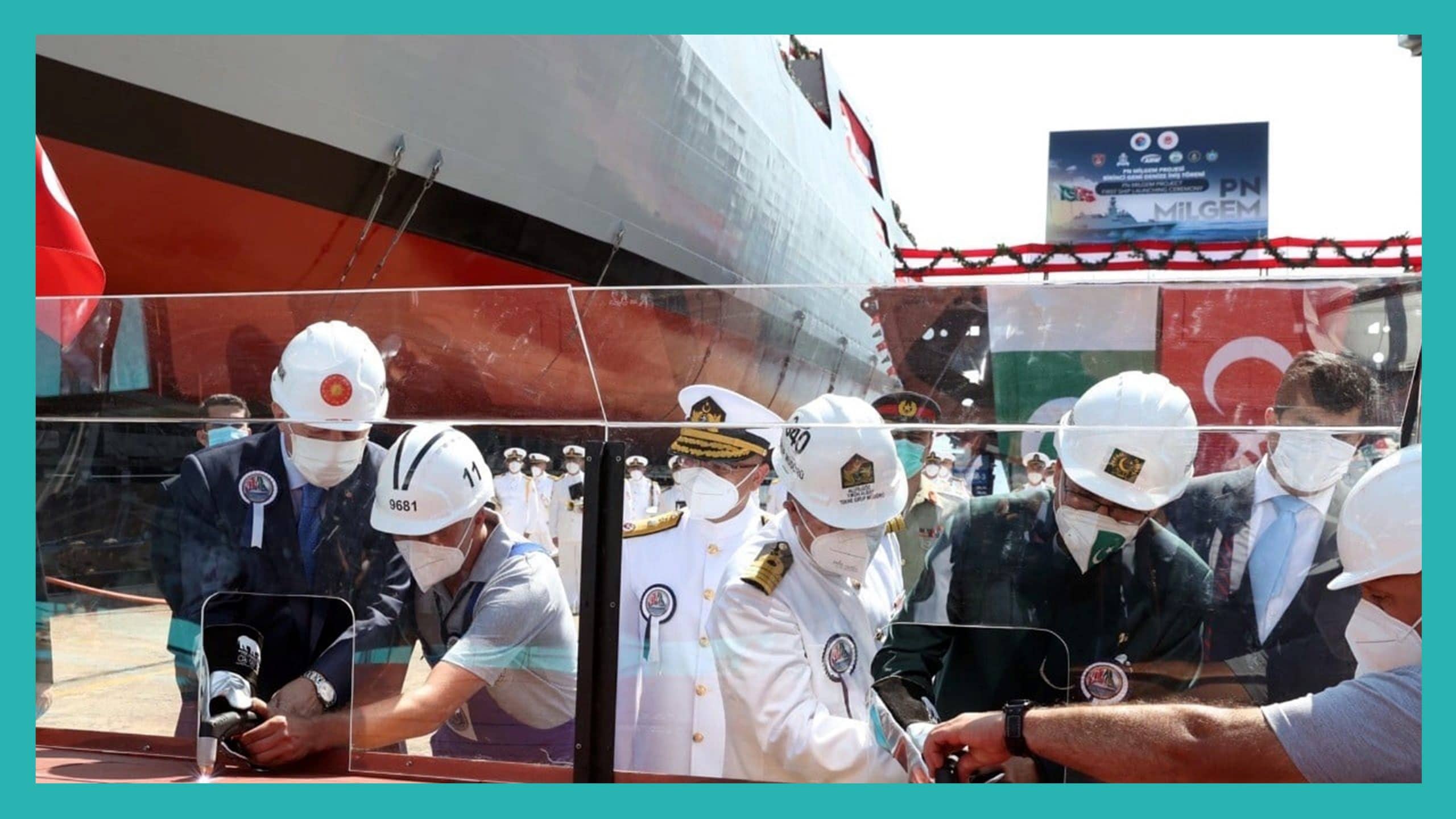6478Views

Pakistan’s GIDS Shines with Strong Munitions Portfolio Quwa Premium
Global Industrial Defence Solutions (GIDS) debuted a staggering roster of new precision-guided munitions at the 2024 International Defence Exhibition and Seminar (IDEAS), a tradeshow promoting the Pakistani defence industry every two years.
GIDS is a Pakistani state-owned enterprise (SOE) that commercially represents other Pakistani defence industry SOEs. In other words, GIDS manages the sales and marketing work for certain SOEs aiming to promote their solutions to overseas markets, especially in the Middle East.
While the new Shahpar-III drone was the centerpiece of GIDS’ pavilion at IDEAS 2024, its most impactful impression came from its growing – and largely unexpected – lineup of new munitions.
These new munitions include new-generation lightweight air-launched cruise missiles (ALCM), a torpedo designed to be launched from drones, a new family of Pakistani loitering munitions, and further evolutions of longstanding weapons, such as the Bakhtar Shikan anti-tank guided missile (ATGM).
This report reviews each of GIDS’ new products while delving into Pakistan’s deeper strategy of becoming a strong munitions vendor for both domestic and foreign markets.
Prior to IDEAS 2024, GIDS already had a relatively credible munitions portfolio centered on the Harbah NG anti-ship cruising missile (ASCM), Taimoor ALCM, Takbir Range Extension Kit (REK), and Fatah-I/II guided surface-to-surface missiles (SSM).
While not as expansive, GIDS’ previous portfolio covered the essentials, such as providing long-range, precision-strike capabilities from land, air, and sea. However, most of GIDS’ long-range solutions were large and, potentially, appealing to countries seeking strategic-level capabilities.
For example, the Taimoor ALCM offers a range of 290 km. However, it weighs around 1,200 kg and can only be deployed from a fighter aircraft, such as the JF-17 Thunder. Moreover, solutions like the Taimoor could be relatively costly and, consequently, only affordable in limited quantities. These factors limit the volume GIDS can potentially export if it relied mostly on ‘heavy-hitters’ like cruise missiles.
Thus, the SOEs producing these munitions (such as the National Engineering and Scientific Commission or NESCOM) saw a gap in lower-cost and/or lighter-weight solutions, such as the following:
GIDS’ Growing Munitions Lineup
Rasoob-250: Pakistan’s Take on the Joint-Strike Missile?

One of GIDS’ most interesting solutions was the Rasoob-250 air-launched cruise missile (ALCM). Using a stealthy low-observable (LO) airframe, the Rasoob-250 offered a range of 350 km with a cruising speed of Mach 0.7 and accuracy of within 5 m CEP (circular error probable). Including a booster, it had a total mass of 285 kg, with the semi-armour piercing warhead taking up 75 kg. GIDS is promoting the Rasoob-250 as a solution for use from drones, helicopters, and maritime patrol aircraft (MPA).
Being a stealthy ALCM, the principal vendor of the Rasoob-250 is likely Air Weapons Complex (AWC), a subsidiary of the National Engineering and Scientific Commission (NESCOM). AWC was responsible for developing the Ra’ad and Taimoor-series of ALCMs.
When factoring in the Rasoob-250’s weight and airframe design, one can see some conceptual similarities between it and the Norwegian-American Joint Strike Missile (JSM) and Turkish SOM-J. The latter are both stealthy lightweight ALCMs designed for use from within the F-35’s internal weapons bay.
It is likely that the ultimate goal of the Rasoob-250 is to eventually arm Pakistan Air Force (PAF) fighters, possibly the next-generation fighter aircraft (NGFA) – such as the J-31/J-35A – and, potentially, unmanned combat aerial vehicles (UCAV). One could potentially see a slightly larger variant of the Rasoob-250 (i.e., closer to the 400-500 kg weight class of the JSM and SOM-J) for this purpose.
AZB-81LR: Pakistan’s Small Diameter Cruise Missile

This munition arguably reflects Pakistan’s ambition to become a world-class munitions vendor. Developed by Qaswa Industries, the AZB-81LR will reportedly offer a range of 200 km. It will likely use a Mk.81 bomb as the basis, which weighs about 119 kg. Its guidance suite likely combines GNSS with an IIR seeker, thus giving the AZB-81LR a fire-and-forget capability against both fixed and moving targets. To achieve its long range, the AZB-81LR uses a turbojet-assisted gliding system.
End of excerpt (658/2,899 words)
Existing Quwa Premium members can log in below
Note: Logged in members may need to refresh the article page to see the article.


